|
Monday, March 26, 2012
Progress Notes
Last week I featured Clyde Lee Jenkins’ story about the post Civil War economic recession and social unrest remaining after the war in our county. In future Progress Notes I will continue to feature stories about the Civil War as we pass through this sesquicentennial year of remembrance of that time of dissention and violence in our nation. This week I will present a story told me by Carrol McCubbin, a native of Brumley who now lives in Lake Ozark (photo 01).
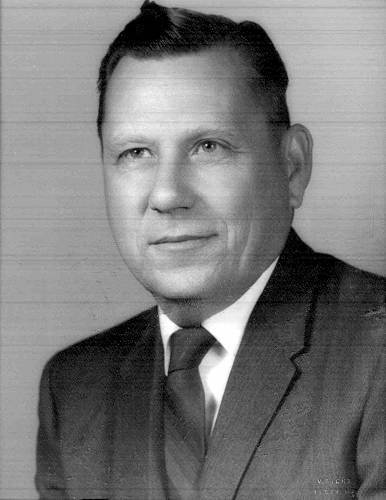
01 Carrol McCubbin when Legislator
Carrol, who now is 96 years old, was a former Miller County State Representative as well as Miller County Superintendent of Schools during his long and distinguished career as one of the major figures of our county’s history. I had featured Carrol’s biography in a previous Progress Notes of September 22, 2008.
In that biography I presented Carrol’s paternal McCubbin family history. This week, I will present the story of Carrol’s maternal grandfather, Obadiah Schooley (familiarly known as Obed) who was a soldier in the Union Army under the command of General William Tecumseh Sherman. Here is an old portrait of Obed and his wife Martha given us by Carrol’s daughter, Brenda Schaffer (photo 02):
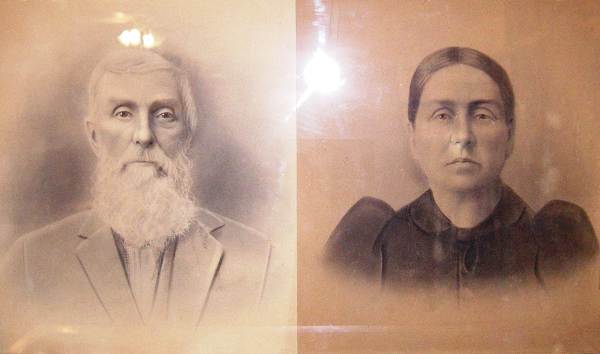
02 Obed and Martha Schooley
And here is the story of Carrol’s grandfather, Obediah Schooley as he told it to me:
Conversation with Carrol McCubbin about his grandfather Obadiah Schooley
Carrol said that his grandfather, Obadiah (“Obed”), died before he was born but he learned much about him from his mother, Eliza, who was a daughter of Obed. Carrol said that Obed was a Calvary soldier for the Union Army under the command of General William Tecumseh Sherman (photo 03).
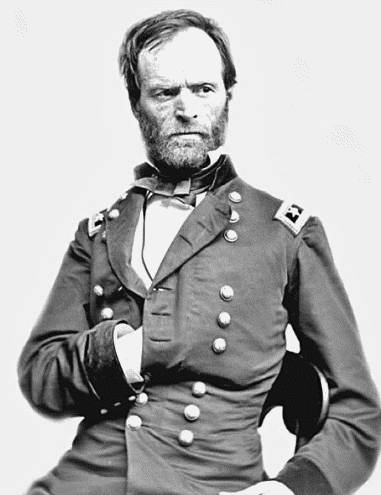
03 General William Tecumseh Sherman
At the beginning of the Civil War Obed was living in Indiana. Carrol said his mother told him that one day Obed went to a Chappaqua (public speech and entertainment event) and became so impressed by one of the speakers regarding the hostilities then becoming very intense between those sympathetic to the North and those to the South, that he signed up immediately for General Sherman’s Army. The mission given Sherman by Grant and Lincoln was to “lay waste” to a twenty mile wide strip of land on a march to the south east all the way to Atlanta and Savannah. Carrol said the soldiers were called “boomers” because they were moving so fast that not even a supply train could keep up with them. They had to find for themselves any food or other necessities they might need for the march. The army was divided into two different sections, each making a swath twenty miles in width all the way to the south land. They were traveling at a rate of twenty miles per day.
Their only supplies were what they took from the farms along the way. What they had to leave behind was burned. Even though the wives and mothers pleaded for some food to be left them for their children the soldiers were told not to disobey their orders. The mission was to completely decimate the south land to prevent the regrouping and resupply of the Confederate Army. Even thousands of bales of cotton were hauled away though they had no food value; however, they could have been used for making clothing for the southern soldiers.
Carrol said that the march by Sherman sped up the end of the war and politically is what reelected Lincoln as President (photo 04).
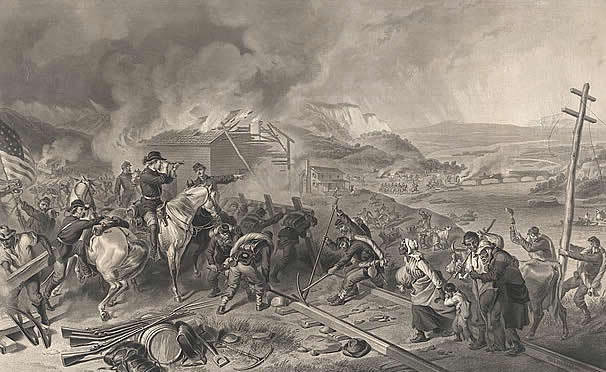
04 Sherman's March to the Sea
During the march Obed broke his leg; however, he recovered and was given several awards of acknowledgement of his service, Carrol said.
Upon returning to Indiana after the war, Obed decided to swap for some land in Iowa. However, on the way to Iowa someone told him Iowa was nothing but swamp land. So Obed decided instead to come to Missouri where he homesteaded a farm south of Brumley on Rolling Creek.
Obed was born August 6, 1832 and died June 6, 1909 in Miller County.
Here is a summary of Obed’s immediate family as presented at this website:
Name: Obediah Schooley
Birth: About 1832 in Indiana
Death: June 25, 1909 in Brumley, Missouri
Father: Henry Schooley (1785 - 1848)
Mother: Margaret Heston (1794 - 1832)
A quick note about Obediah's parents:
Obediah's father, Henry was born in Virginia and married Margaret Heston at the age of 25 in 1810. They had eight children: Hannah, John, Reuben, Henry, Archibald, Lewis, David and Obediah - the youngest.
Henry's great great grandfather, Samuel was born in the West Jersey, Channel Islands and made his way to Virginia. The Schooley family lived in Virginia for over 60 years.
Obediah's mother, Margeret Heston and the Heston family were mainly from Wrightstown, Pennsylvania. Margaret's great x 3 grandfather Zebulon migrated to the United States from England.
Obediah’s Marriages:
1) Rachel Marley (1832 - 1854 or 1860)
Obediah and Rachel were married in 1850 in Indiana. They had two children: William H. (b. 1851) and Isabelle (b. 1854).
2) Martha Ann Henry (abt 1848 - 1899)
They were married in 1861 in Indiana. They had 10 children: Nancy, Mandy, Angeline, Sarah Ann*, James, Mary, Eliza, Harvey, John and George.
A very complete discussion of Sherman’s “March To The Sea” can be read at this Wikipedia website entry for those who would want to read in detail about this historical episode of the Civil War.
Recently, John Michael Smith sent me a website where was featured a photo of an old fishing camp named Fish Haven located on the Osage River just a short distance down stream from Bagnell Dam (photo 05).

05 River View at Fish Haven Camp
I hadn’t known before about the camp but found some information about it which Dwight Weaver wrote in his book, History and Geography of Lake of the Ozarks VI p. 65.
Here is what Dwight wrote:
Fish Haven Camp/Resort Lake Ozark, Miller County Missouri
Dwight Weaver: History and Geography of Lake of the Ozarks VI p. 65 (photo 06)
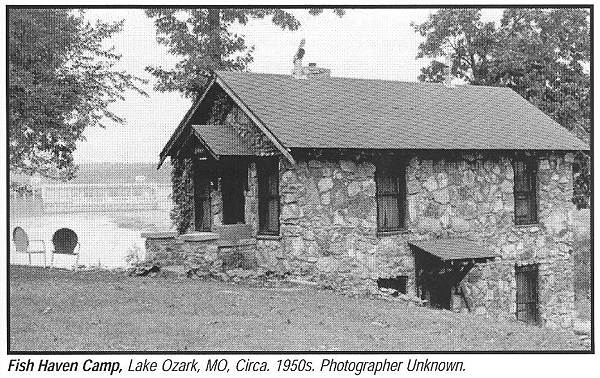
06 Fish Haven Camp, Lake Ozark, Mo - 1950's from Dwight Weaver
Fish Haven Camp, built in 1931, was the first camp to be established on the Osage River just below Bagnell Dam. It was located along the south bank of the river approximately three quarters of a mile from the dam.
Early ads for Fish Haven used a hyphen in the name. The work “camp” was used for several decades before being changed to “resort.” Early on, the business was promoted as the “Only resort located below the dam, good river or lake fishing.” Being able to use this phrase in advertising ended in the mid 1950’s when Charlie’s Resort, which later became Golden Rule Resort, was also built along the river below the dam. Charlie’s Resort was about 1,500 feet further downstream.
Fish Haven Camp had small cottages and most were frame although the resort did have at least one, two story rock cottage built on the hillside facing the dam. The two levels were separate rental units as the text on a Fish Haven line postcard that was mailed home by a fisherman said: “This is a real pretty place. We have a cabin on the hillside. It is a two story…and we have the lower half.”
Jacob Gier, a long time resident of Miller County who helped clear the basin when Bagnell Dam was under construction, built most of the cottages and other structures at Fish Haven Camp. The camp was a strong competitor for business for more than 50 years. In the late 1960’s, under the ownership and management of Mr. and Mrs. Roy Smith, Fish Haven acquired an enviable reputation for the enjoyment people had fishing from the resort’s Catamaran, which had Coast Guard approved pilots. To reach the camp, guests used Lake Road 54-19, now officially named Fish Haven Road. The camp no longer exists.
My mother, Susie Bear Pryor, has memories of the old Fish Haven resort which I will copy here:
“One evening I had supper at Fish Haven resort sometime in the early 1930’s. I went there with my brother Arthur Bear, who had recently married his wife, Lena Brown. Lena had worked at Fish Haven before they married. She really liked her job there becoming close friends of the people that owned the resort. I remember best the delicious cherry pie. Lena always called the woman who had hired her Aunt Mable. I remember that she gave Arthur and Lena a huge set of dishes for their wedding gift. The dishes were of green crystal glass and included quite a number of pieces. Lena was so proud of them and I thought they were so pretty myself.”
St. Elizabeth native Bill Weidinger, who for many years has been a resident of Eldon, brought us some interesting photos of the Heimann family of St. Elizabeth (photo 07).

07 Bill Weidinger
The Heimanns’ were cousins of Bill through his mother’s ancestry. They were what St. Elizabeth native and author Dale Doerhoff called “second stage immigrants” having come to Miller County from the Westphalia area.
Note: You can read Dale’s history of St. Elizabeth at this previous Progress Notes.
Here is a Heimann family photo taken sometime in the 1930’s (photo 08):
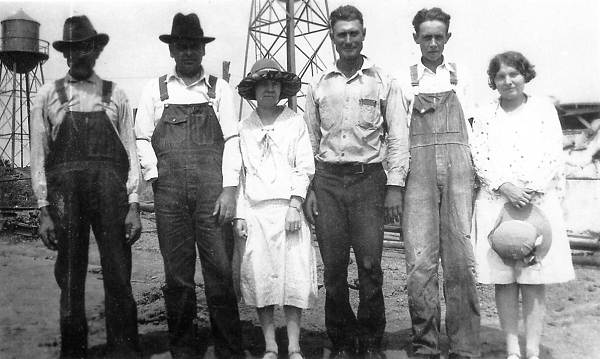
08 Heimann Family
Joseph, Frank, Clara Heisler Heimann, John, Martin and Caroline Tappelhorne Heimann
Joseph Heimann owned a thrashing machine which he operated in the St. Eizabeth area (photos 09 and 10).
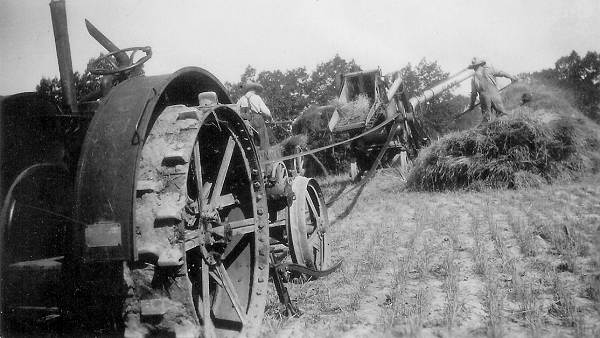
09 Joseph Heimann Thrashing Machine
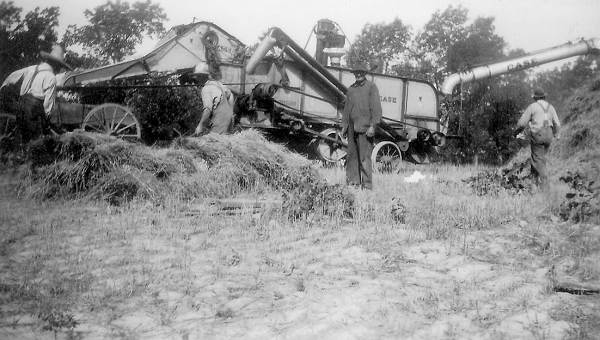
10 Two on right are Joseph and Frank Heimann
Bill told me descendents of the Heimanns’ no longer live in the St. Elizabeth area.
John Heimann, son of Joseph (number 4 in photo 08 above) was brutally murdered by two escaped prisoners in 1961. Bill gave me a synopsis of this tragic event as presented in some newspaper clippings he saved (photo 11).
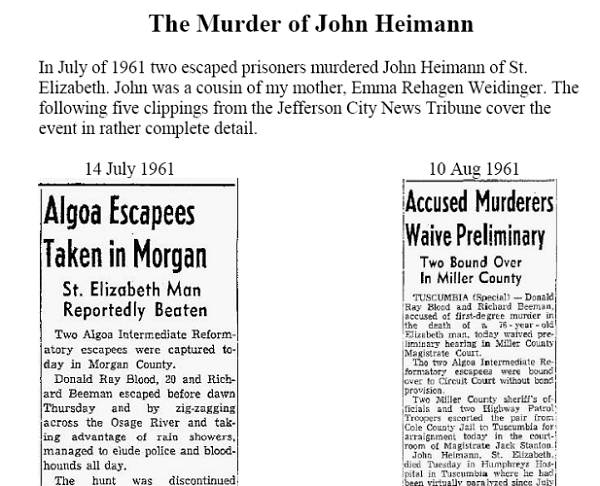
11 The Murder of John Heimann
Click image to view entire document in PDF format
Here is a photo of John Heimann’s tombstone in the St. Lawrence Cemetery in St. Elizabeth located for me by David Statler, our webmaster on the Find a Grave website (photo 11a).
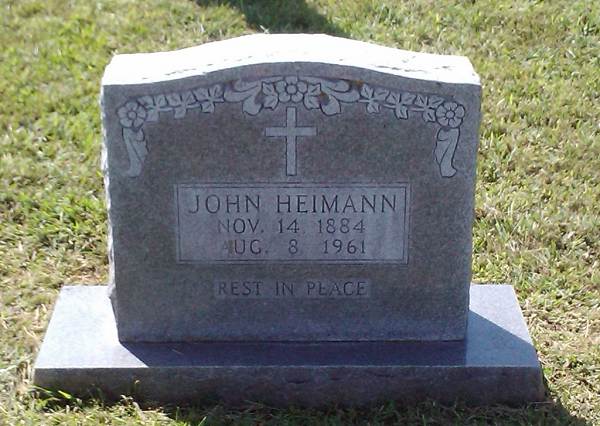
11a John Heimann Tombstone
Finally, I will finish this week’s Progress Notes with an additional note about Carrol McCubbin. During his time as County School Superintendent Carrol supervised the consolidation of all the nearly 100 one room schools in Miller County except for six. This process was complicated and not always easily accomplished but Carrol’s skills of leadership and educational training facilitated the project’s successful completion by the early 1950’s. You can read more about the Miller County School history on our own website.
Collated below are some of the one room schools which were closed after the consolidation began mostly in the southern half of the county (photos 12 - 29).
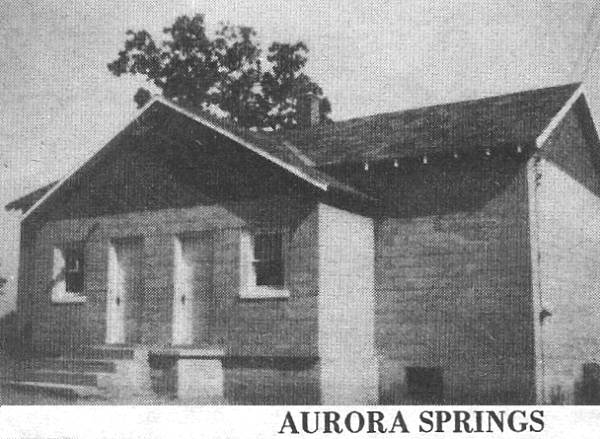
12 Aurora Springs
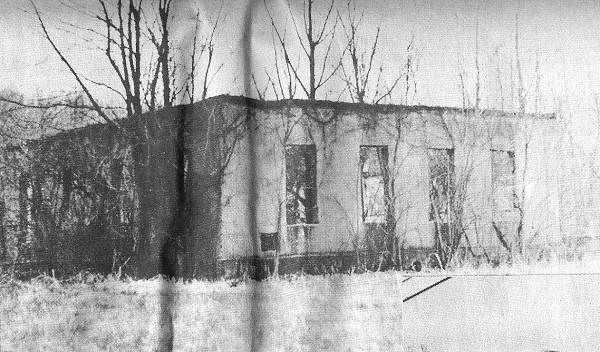
13 Bagnell
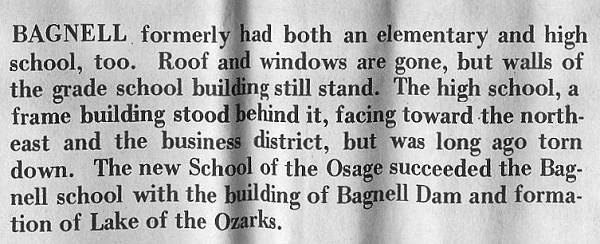
14 Bagnell Caption
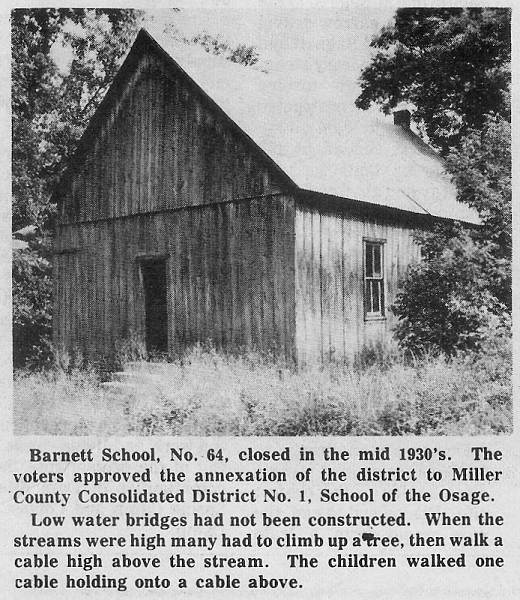
15 Barnett School
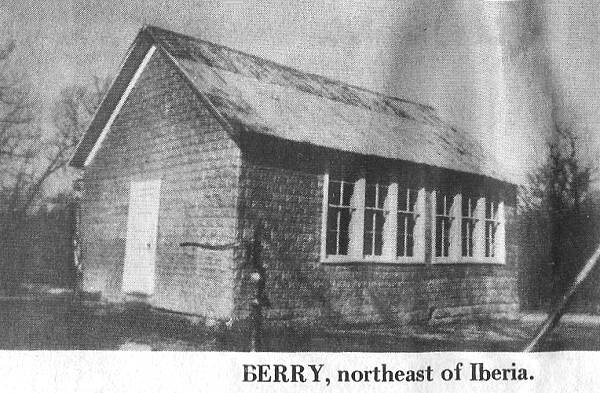
16 Berry
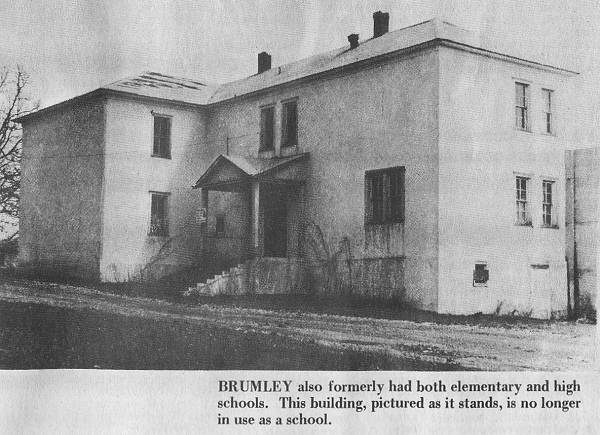
17 Brumley
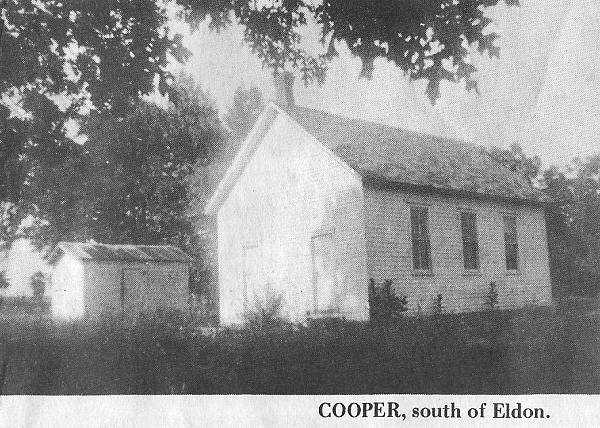
18 Cooper
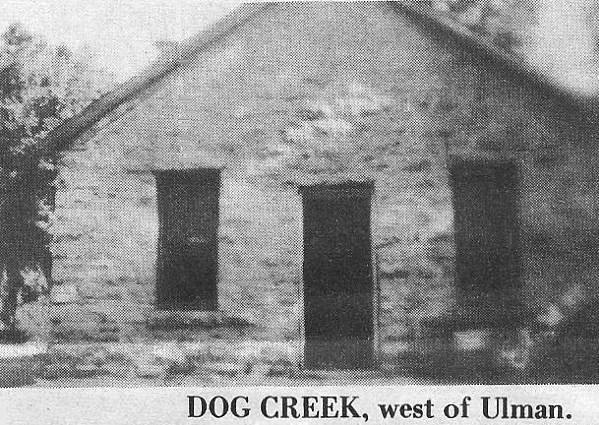
19 Dog Creek
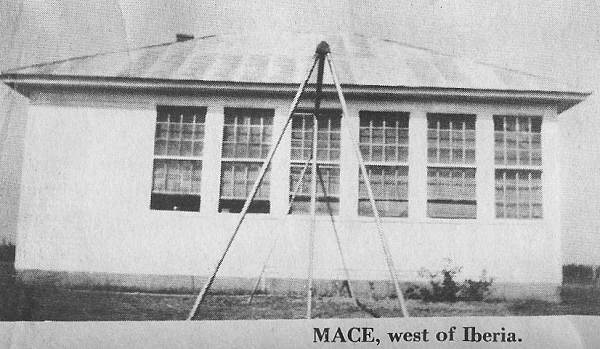
20 Mace
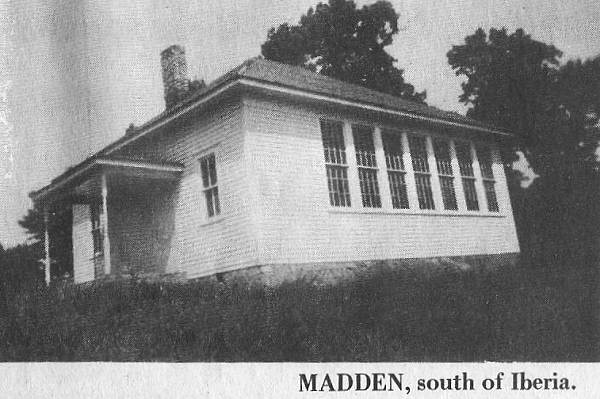
21 Madden
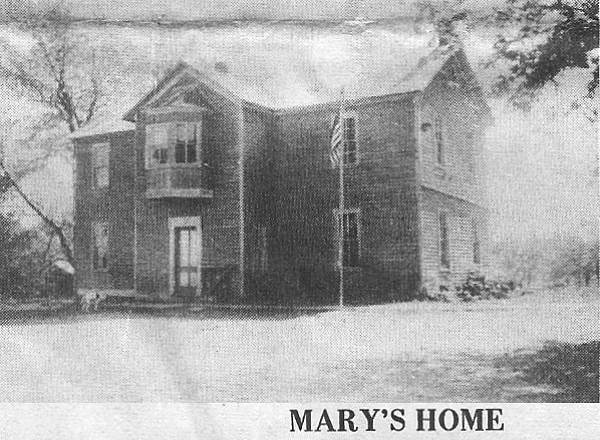
22 Mary's Home
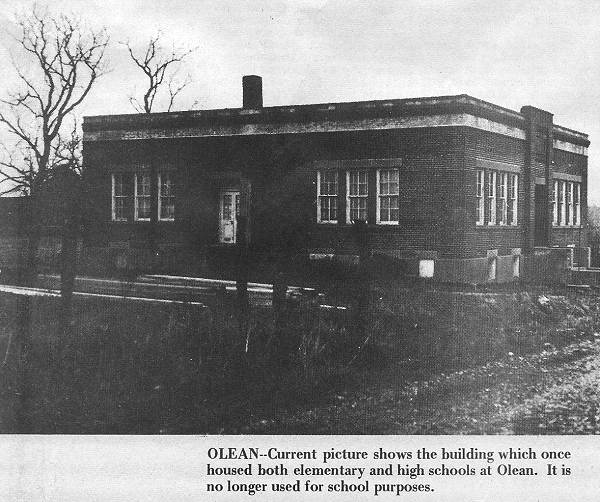
23 Olean
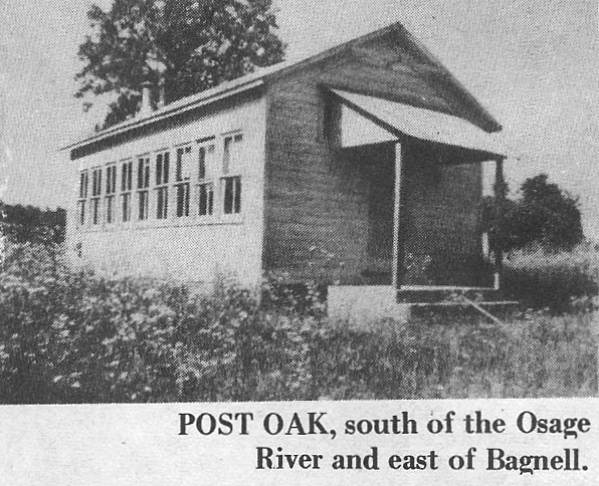
24 Post Oak
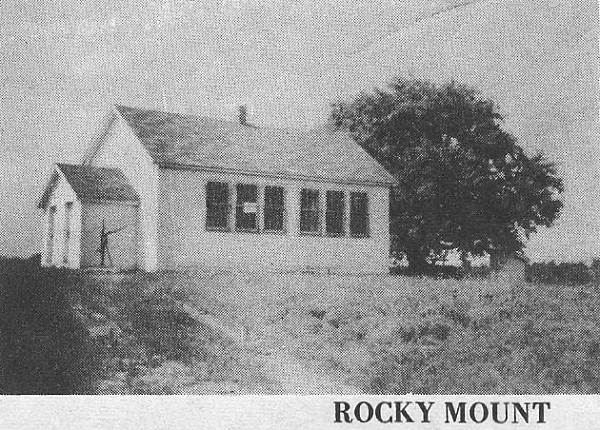
25 Rocky Mount
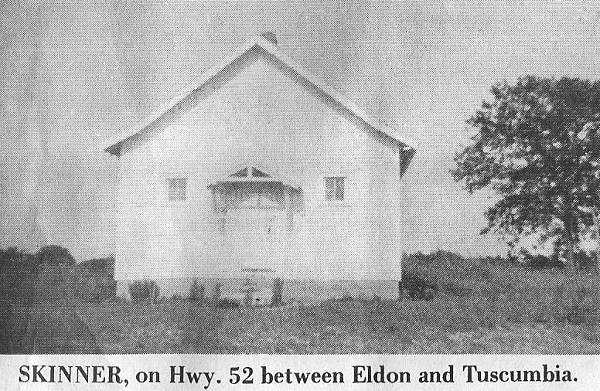
26 Skinner
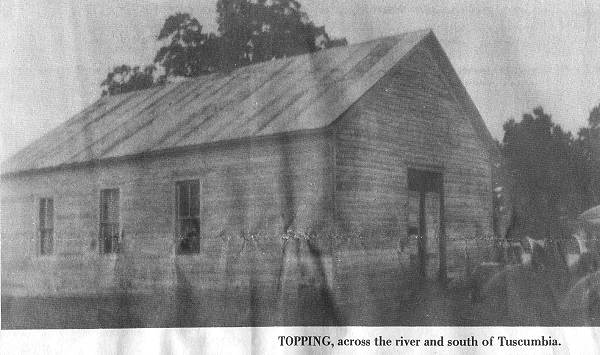
27 Topping
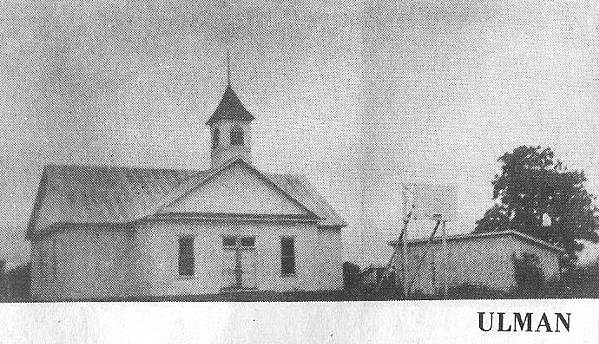
28 Ulman
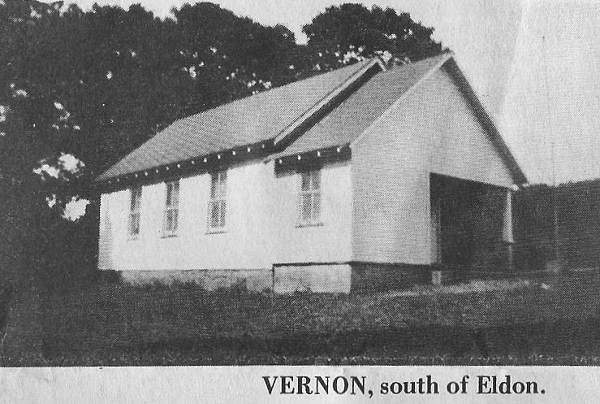
29 Vernon
Another group of photos of one room schools consolidated in the northern half of Miller County was collected by Betty Roark of Olean which I presented on a previous Progress Notes.
That’s all for this week.
 Joe Pryor
Previous article links are in a dropdown menu at the top of all of the pages.
|

